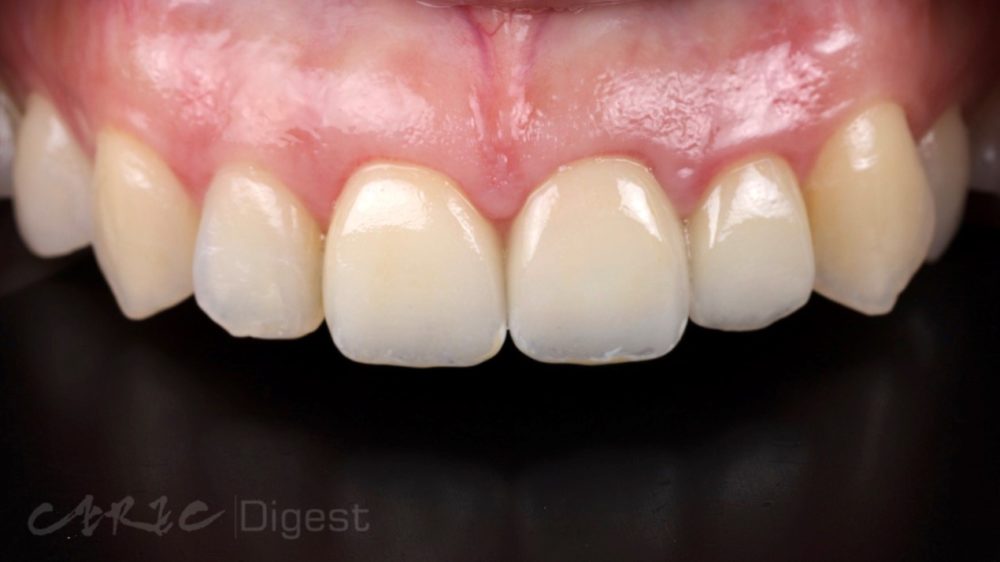Sofia came into our office and asked for a replacement of an old anterior fixed partial prosthesis because she was dissatisfied with the shape and color. The catch was that she had planned to take wedding photos very soon, so the aesthetic upgrade needed to be done within a short time. After a brief interview with Sofia and a quick smile analysis, I noted her high smile line with excessive gingival display. By the next visit, she agreed with our treatment plan involving soft tissue re-contouring by crown lengthening procedure, followed by monolithic all-ceramic crowns.
Though we use primarily photos for evaluating the patient’s smile, they are sometimes not the best reference because the patient expressions are sometimes forced and stiff. Therefore, we make sure to observe our patient during our conversations to take additional notes on their tooth display. For Sofia, her old prostheses, however faulty, did have a redeeming quality: the incisal contours are at least very close to her lower lip line.
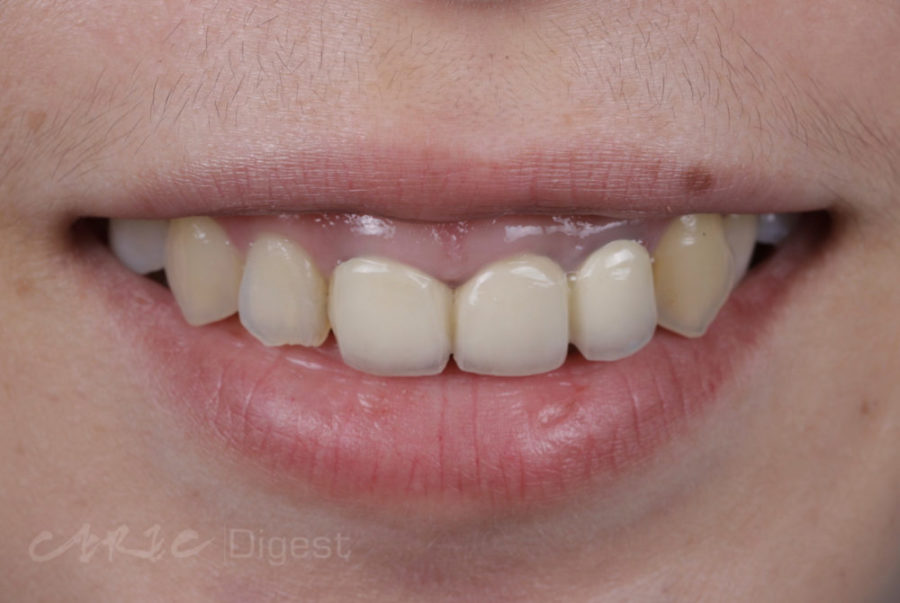
Crown lengthening procedure was performed with a waterlase. The old prostheses were used as a starting reference for the amount of soft and hard tissue reduction. Finally, the desired tooth length and zenith positions for the centrals were established.
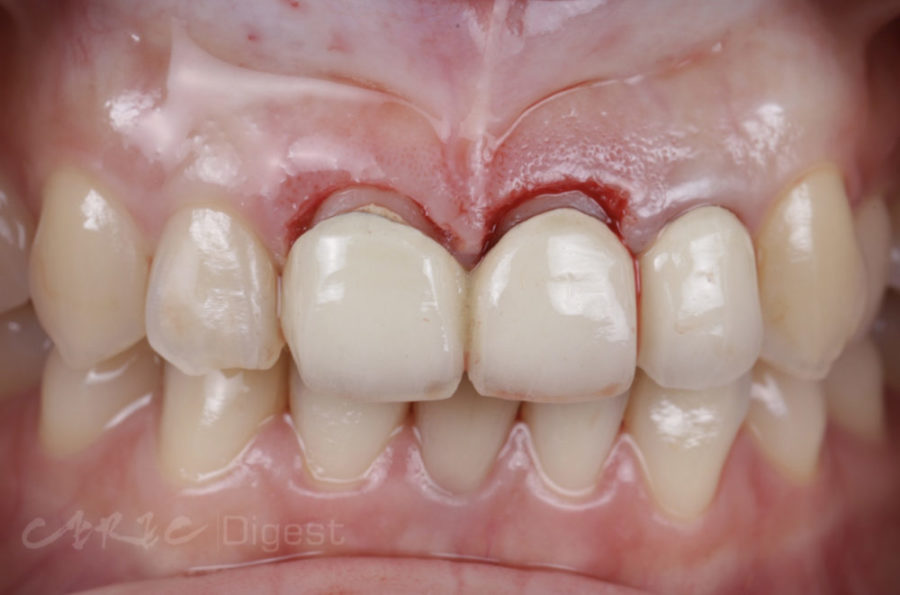
Sofia was about to taking her wedding photos and had a tight schedule, so the final restorations were placed one week after crown lengthening procedure. The abutment of tooth 21 was discolored due to prior root canal treatment and metal post placement. For monolithic full-ceramic crowns, the discolored abutments can be detrimental to the shade of the final crown. Therefore, I applied a thin layer of opaque resin to mask the grayish hues.

Having sufficient reduction is always a difficult thing to check for, especially on a tooth previously prepared by another dentist. From our experience, cervical third of buccal and palatal sides are usually under-prepared. In the next image, the light blue bubble show the minimal thickness as configured within the software. On the right side, the this bubble penetrated into the opposing teeth, which means that the reduction on palatal side is not enough.
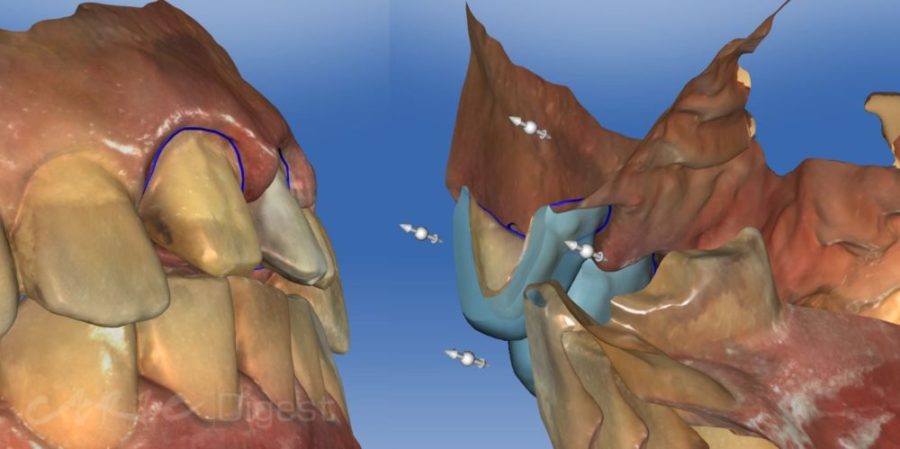
For anterior restoration design, lateral profile photos and biocopy scans are two useful pieces of information to have. The precision with which the biocopy can match with the prepared abutment has to do with the coverage of the scanned immovable tissue. More advanced design on alignment and morphology of anterior restorations are covered in Esthetic Courses at CEREC Asia.
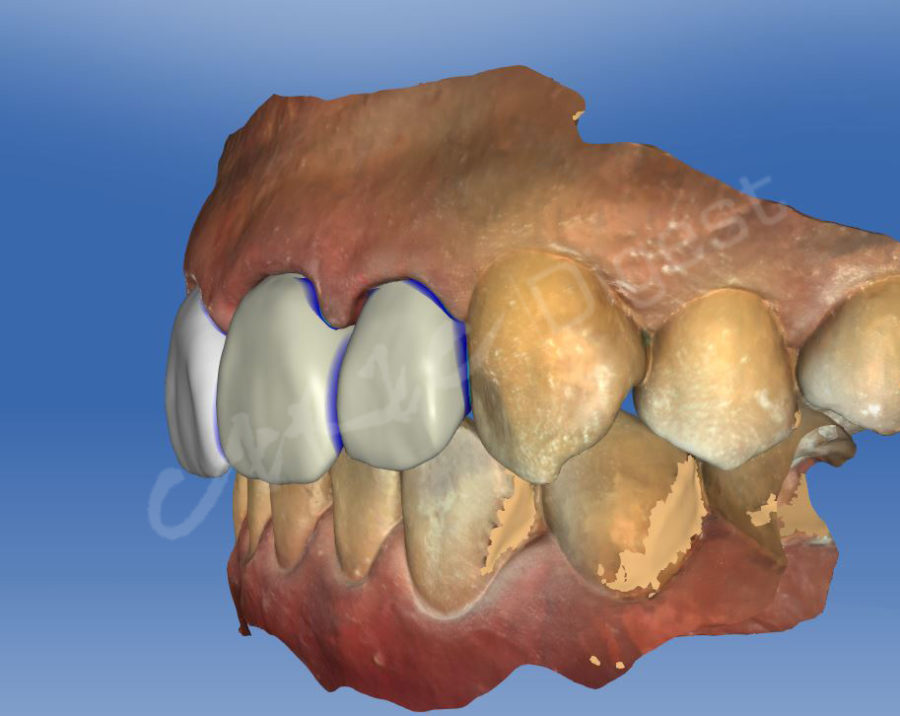
As for the CAD/CAM ceramic, considering the shade distribution of adjacent teeth, we chose Triluxe Forte from VITA.
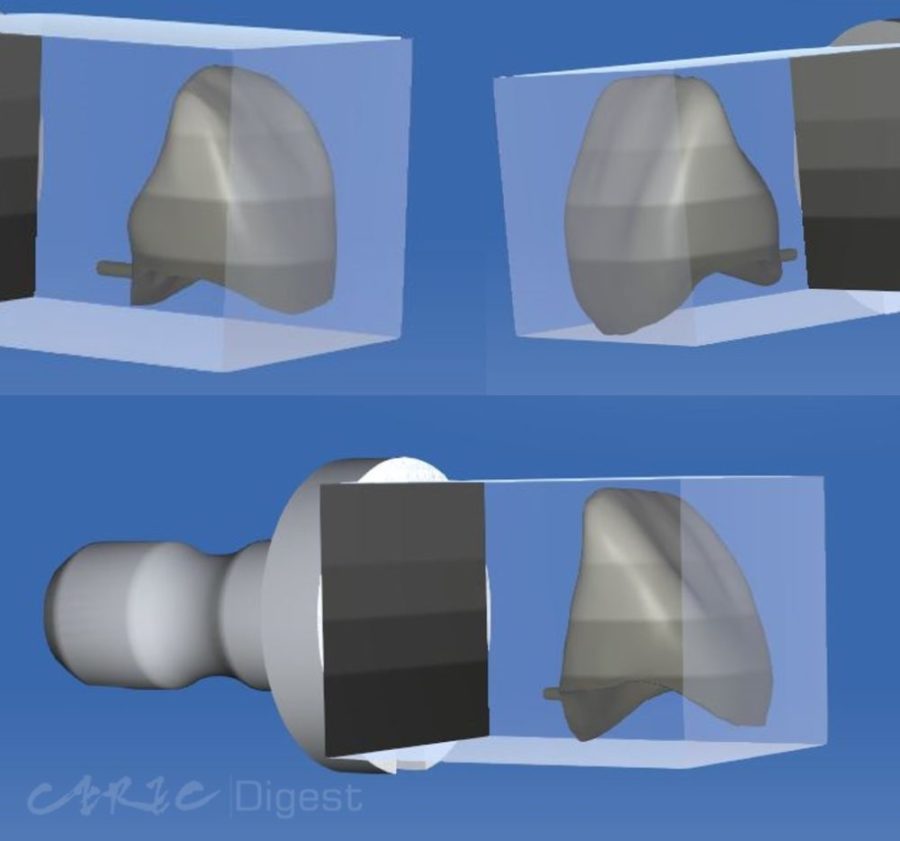
At one-month follow up, the gingiva had acceptable healing.
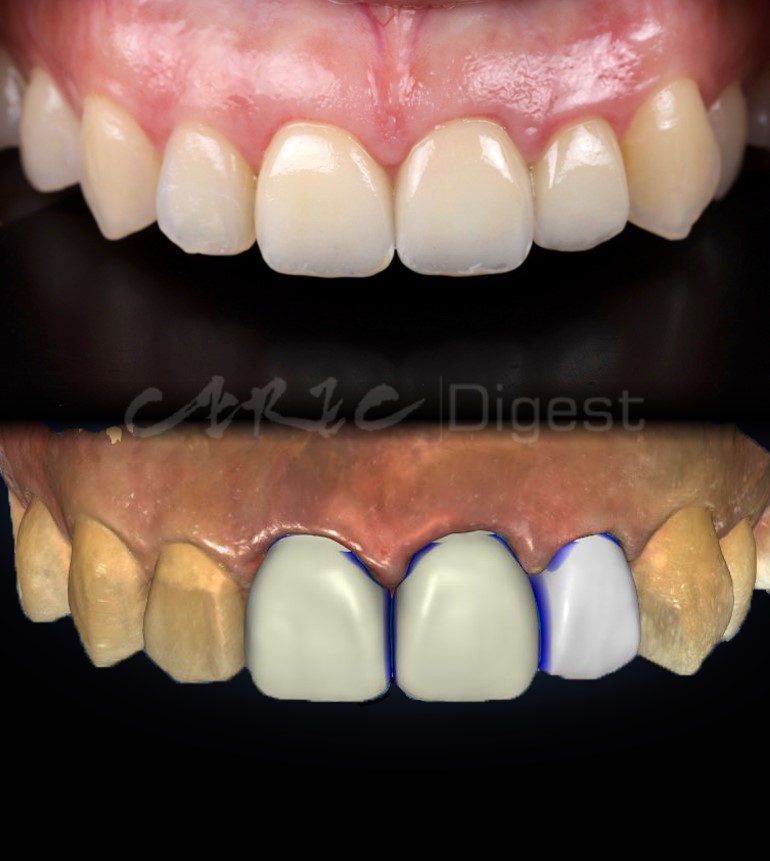
Summary
We were able to achieve the optimal outcome with Sofia through her acceptance of the crown lengthening procedure. One limitation of this case is time set by the patient, so ideally we would wait a bit longer between follow-ups until crown placement. This simple clinical case showcases a few of our routinely procedures combined with a digital workflow.
李萌 is a member of Sweet Space Dental Clinic and CEREC Asia Training Center.
